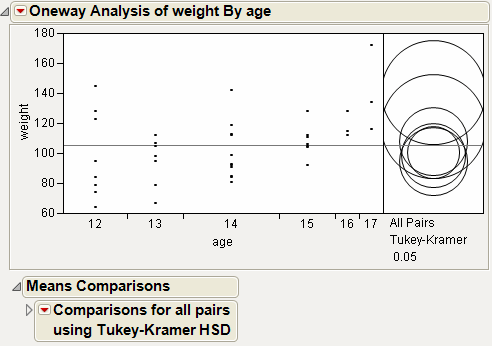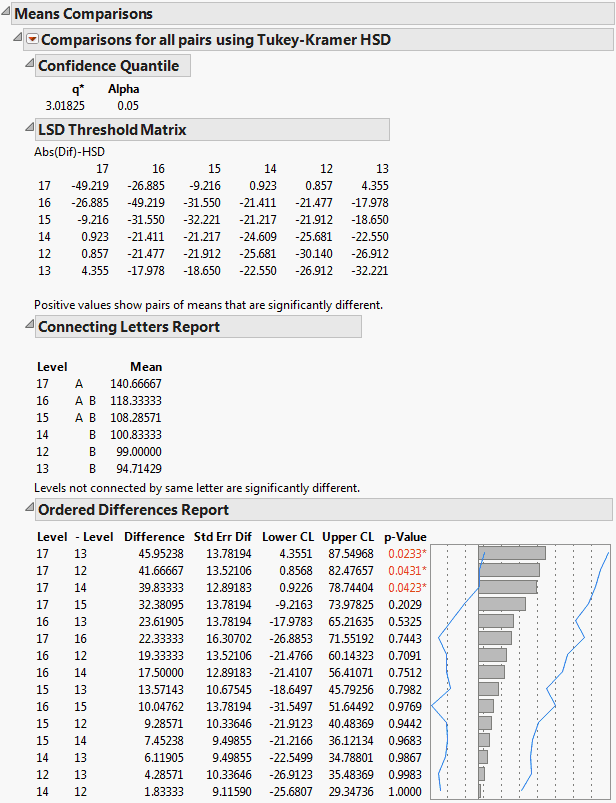Example of the All Pairs, Tukey HSD Test
1. Select Help > Sample Data Library and open Big Class.jmp.
2. Select Analyze > Fit Y by X.
3. Select weight and click Y, Response.
4. Select age and click X, Factor.
5. Click OK.
6. Click the red triangle next to Oneway Analysis of weight By age and select Compare Means > All Pairs, Tukey HSD.
Figure 6.17 Example of All Pairs, Tukey HSD Comparison Circles
Figure 6.18 Example of Means Comparisons Report for All Pairs, Tukey HSD
In Figure 6.18, the Tukey-Kramer HSD Threshold matrix shows the actual absolute difference in the means minus the HSD. This value represents the difference that would be significant. Pairs with a positive value are significantly different. The q* (appearing above the HSD Threshold Matrix table) is the quantile that is used to scale the HSDs. It has a computational role comparable to a Student’s t.

